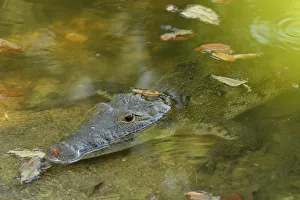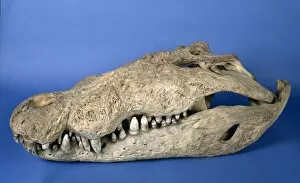Crocodylinae Collection
"Crocodylinae: Majestic Creatures of the Ancient World" In the heart of the Maya Archaeological Site Tikal, nestled within Tikal National Park in Peten, Mundo Maya
All Professionally Made to Order for Quick Shipping
"Crocodylinae: Majestic Creatures of the Ancient World" In the heart of the Maya Archaeological Site Tikal, nestled within Tikal National Park in Peten, Mundo Maya, a magnificent crocodile silently glides through the ancient waters. This powerful reptile, known as Crocodylus palnotis or Muggers, is a living relic from prehistoric times. Across the globe, in The Kimberley region of Australia's Hunter River, a saltwater crocodile emerges with jaws wide open. Its sheer size and strength are awe-inspiring as it dominates its watery domain. Meanwhile, another saltwater crocodile leaps gracefully from a mangrove wetland in Queensland - an incredible display of agility for such a fearsome predator. The scales of these formidable creatures glisten under the Australian sun; their textured armor protecting them from any threat that may come their way. Whether they reside in estuaries or rivers like Zambezi River in Zimbabwe or Mara River in Tanzania's Africa, Nile crocodiles showcase their dominance over these vast waterways. As we explore further into this captivating world species, we stumble upon an intriguing artifact - a saltwater crocodile skull labeled C016 / 5674. It serves as a reminder that even after centuries have passed since The Crocodile painting was created between 1810-17 using watercolor and manuscript text on page 204; these ancient creatures continue to captivate our imagination. With every encounter with Crocodylinae comes both fascination and respect for these majestic beings who have roamed our planet since time immemorial. From archaeological sites to national parks and beyond, they remind us of nature's enduring power and beauty – forever etching themselves into our collective consciousness.












